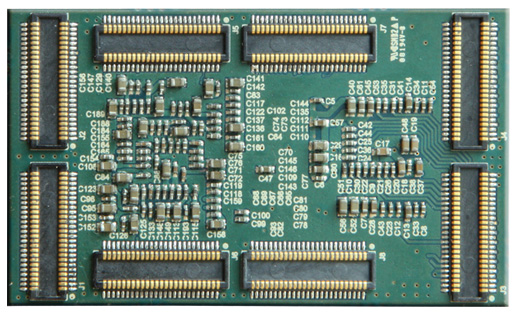folks hi,
i've not posted too often here but the open nature and the active community of the openpandora means that i learned a great deal in taking forward the projects that i'm working on. i've also held off from posting here until there's something a little more concrete. background links below.
basically i'd like to invite the developers of the openpandora to consider creating an EOMA-68 compliant hand-held (there is a team in mexico who are creating something similar, with a much smaller form-factor: 5in).
the reason is quite straightforward: the majority of the development - the hard parts i.e. the CPU, NAND, RAM, Micro-HDMI, Micro-USB, Micro-SD, are basically done and will shortly be available as a credit-card-sized off-the-shelf *USER UPGRADEABLE* component.
I/O which includes keyboard, sound, a 2nd Micro-SD, a 2nd USB, camera, battery and LCD management can be done using a 100-pin STM32F; this can be done with a 4-layer PCB, an example of which can be made available once it is completed (or an earlier version provided which will need rework and some errors to be corrected). it's presently a 118 x 125mm PCB that could be made quite a bit smaller.
source code for the CPU and the Embedded Controller (the STM32F) will always be free software, and the Ingenic JZ4760 CPU Card, if used, would mean that the entire product would be FSF Hardware-Endorseable.
i leave it at that for discussion and consideration.
http://rhombus-tech.net/allwinner_a10/news/
http://rhombus-tech.net/community_ideas/kde_tablet/news/
http://rhombus-tech.net/jz4760/news/
http://rhombus-tech.net/freescale/iMX6/news/
i've not posted too often here but the open nature and the active community of the openpandora means that i learned a great deal in taking forward the projects that i'm working on. i've also held off from posting here until there's something a little more concrete. background links below.
basically i'd like to invite the developers of the openpandora to consider creating an EOMA-68 compliant hand-held (there is a team in mexico who are creating something similar, with a much smaller form-factor: 5in).
the reason is quite straightforward: the majority of the development - the hard parts i.e. the CPU, NAND, RAM, Micro-HDMI, Micro-USB, Micro-SD, are basically done and will shortly be available as a credit-card-sized off-the-shelf *USER UPGRADEABLE* component.
I/O which includes keyboard, sound, a 2nd Micro-SD, a 2nd USB, camera, battery and LCD management can be done using a 100-pin STM32F; this can be done with a 4-layer PCB, an example of which can be made available once it is completed (or an earlier version provided which will need rework and some errors to be corrected). it's presently a 118 x 125mm PCB that could be made quite a bit smaller.
source code for the CPU and the Embedded Controller (the STM32F) will always be free software, and the Ingenic JZ4760 CPU Card, if used, would mean that the entire product would be FSF Hardware-Endorseable.
i leave it at that for discussion and consideration.
http://rhombus-tech.net/allwinner_a10/news/
http://rhombus-tech.net/community_ideas/kde_tablet/news/
http://rhombus-tech.net/jz4760/news/
http://rhombus-tech.net/freescale/iMX6/news/
Last edited by a moderator:




